|
Dourthe:
Château Belgrave and blending 'Essence'
The Bordeaux negociant and property owner aiming to change the
fortunes of affordable wines from Bordeaux
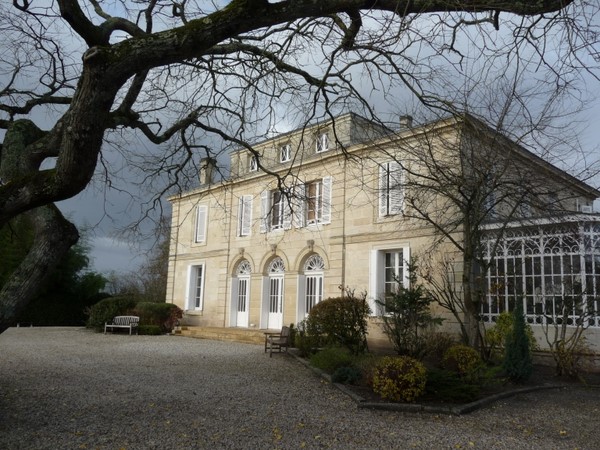
At Belgrave we met up with Dourthe’s
other senior winemaker, Frédéric Bonnaffous, whose remit is to
make the wines from Médoc and Saint Emilion. It’s in the Haut-Médoc
on the left bank, and neighbours St Julien, a more prestigious
appellation which is separated from Belgrave by just a small stream.
To a large extent, Belgrave shares the
beneficial terroir of St Julien, and it has gravel with clay soils,
although a portion of the vineyard is just gravel. Planting density
is 10 000 vines/hectare. Petit Verdot is grown on the best terroirs
here.
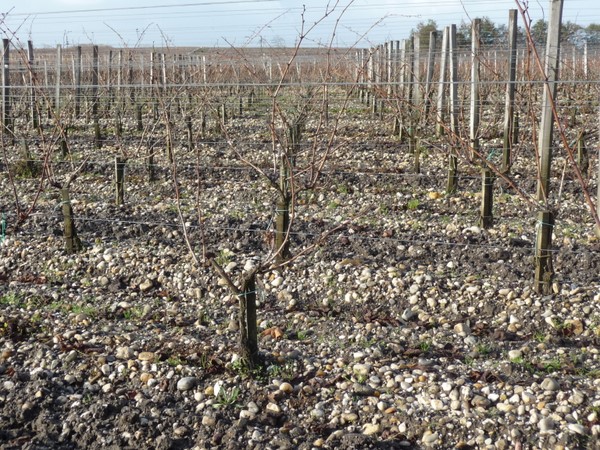
Dourthe arrived here in 1979, and
replanted the vineyard, putting the different varieties in the right
place. The earlier ripening plots got Petit Verdot, and then later
ripening got Cabernet Sauvignon, and even later ripening got Merlot.
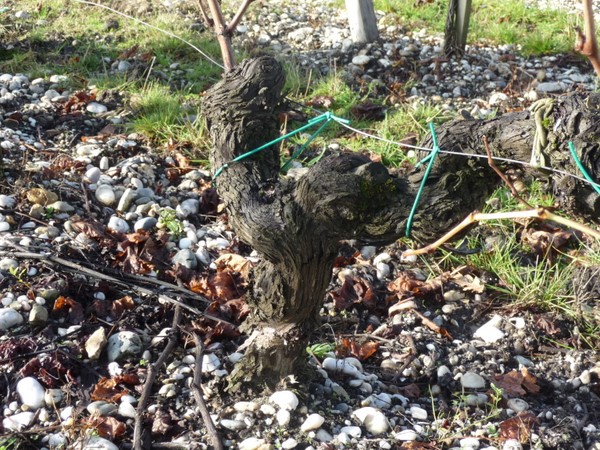
In a small plot called Soleil, grass is
used to compete for water. The gravel is white-coloured here, which
is different from the more brown-coloured gravel in Pauillac. A
barley cover crop is used in winter to catch nitrogen. Most of the
vineyard is worked mechanically, although herbicides are used in
some bits.
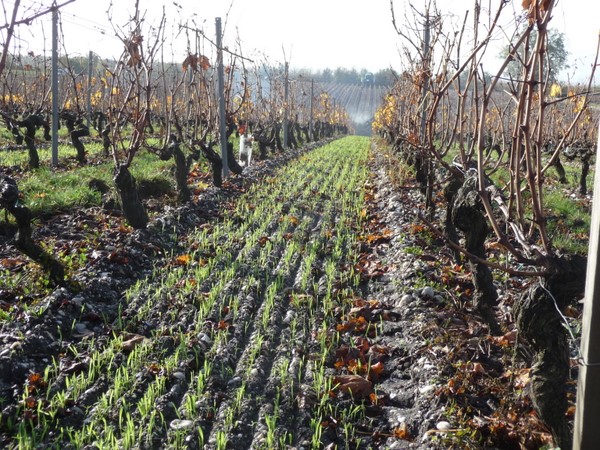
The cellar was built in 2004, with the
intention of fitting it out with tanks sized to reflect the parcels
in the vineyard. Since then, a program has been carried out which
investigates the hydric stress in the vineyard, and as a result
separate parcels within larger parcels are managed differently. The
result is that now, three or four different parcels are put in one
tank because of selective harvest.
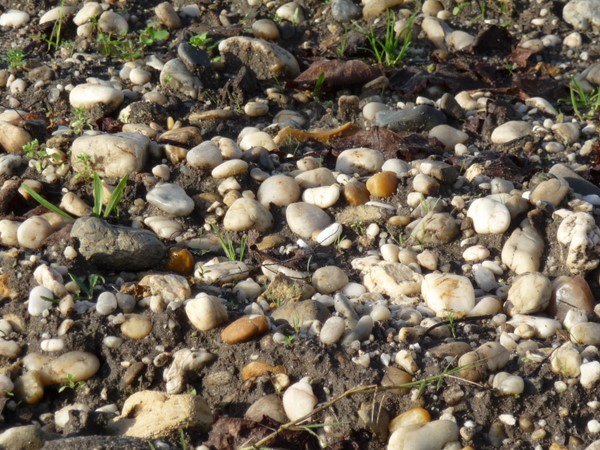
Grapes are destemmed and the tanks are
filled by elevator rather than pump. Pigeage is used in all the
tanks, which they find keeps the fruit better than pumpovers. After
fermentation, the pressings are graded A, B or C. In 2009, an
incredible vintage, most were A and they’ve never had so little
graded C.
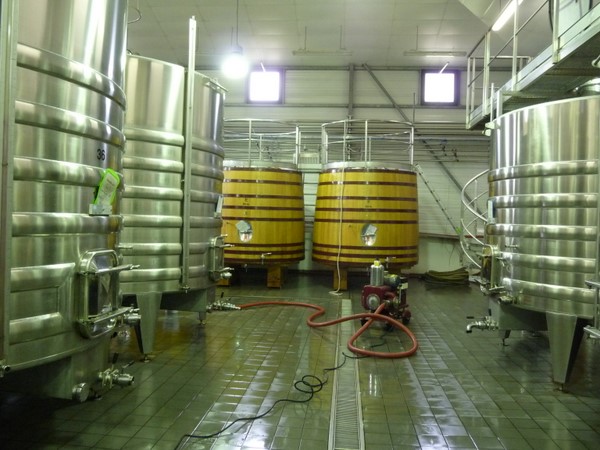
Blending
Essence
Essence is Dourthe’s top wine, blended
from the top Dourthe properties. The blend is made late, and then
the wine is aged for a further six months to get the components to
knit together. The work starts in the vineyard, however, with 8–10
hectares chosen and managed for the program, with lower yields.
Belgrave and La Garde usually contribute the most, with some La Bosq
and some Grand Barrail, and a touch of Petit Verdot from Pey la
Tour.
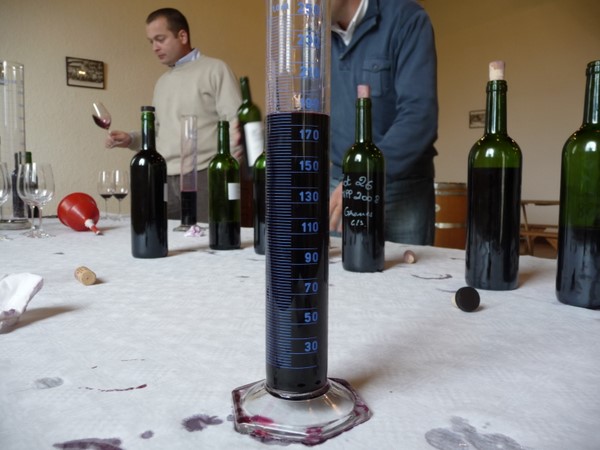
Tim and I were invited to play about blending the components of the
2008 Essence. These were:
-
Belgrave Merlot Lot 8, Fontaine Block
Sweet blackcurrant with a spicy oak sheen. Concentrated and well
defined, but oaky at the moment.
-
Belgrave Merlot Lot 14, Soleil
Creamy, oaky, spicy nose with pure dark fruits. Fresh and quite
mineralic with nice tannins and lovely structure.
-
Belgrave Cabernet Sauvignon ‘Puits’
Focused black fruits nose with spicy oak. Lovely structured
blackcurrant fruit.
-
Belgrave Cabernet Sauvignon ‘Graves’
Fresh and well defined with lovely supple structure. More
fleshy.
-
Belgrave Cabernet Savignon ‘RDVous’
Fresh, bright, vibrant and juicy with less structure than the
others. Lovely, expressive wine.
-
Grand Barrail St Emilion Cabernet
Franc/Merlot (40/60)
Distinctive oak imprint with some floral notes. Elegant but oaky.
Lighter style.
-
La Garde Cabernet Sauvignon
Beautifully focused, dense and structured with lovely purity.
Structured and beautiful. Amazing.
-
Le Bosq Petit Verdot/Merlot (50/50)
Very fresh, bright and structured with expressive blackcurrant
fruit and some grippiness. Bright and structured.
My blend? I played around a bit, and in
the end settled on:
45% La Garde
23% Le Bosq
8% Belgrave Merlot Soleil
8% Belgrave Puits CS
8% Belgrave Graves CS
8% Belgrave RDV CS
We then submitted our blends, and tasted
them blind, giving them scores. I was pleased that out of the four
of us (the two Dourthe head winemakers, Tim and I), mine was second!
Guillaume’s winning blend was 10% Le Bosq, 45% La Garde and 45%
Belgrave Soleil
THE
WINES
Château Belgrave 2008 Haut-Médoc
(cask sample, final blend)
Nicely structured with lovely gravelly complexity. Fleshy yet
structured with lovely blackcurrant and blackberry fruit. 89–92/100
Château Belgrave 2002 Haut-Médoc
Smooth, open, fruity nose with elegant red fruits. Lovely sweet
berryish character. Open and elegant with nice smooth fruit;
drinking beautifully now. 89/100
Château Belgrave 2004
Haut-Médoc
Nice tannic structure under the sweet pure fruit, with a chalky,
minerally character. Great definition and nice ripeness. 91/100
Château Belgrave 2006 Haut-Médoc
Smooth and quite elegant with nice density to the dark fruits.
Lovely structure and good density. Good fruit expression. 90/100
DOURTHE
 1
Introduction 1
Introduction
 2
Sauvignon Blanc 2
Sauvignon Blanc
 3
Château La Garde, and dinner with Matthieu Chadronnier 3
Château La Garde, and dinner with Matthieu Chadronnier
 4
Château Pey La Tour 4
Château Pey La Tour
 5
Château Belgrave, and blending Essence 5
Château Belgrave, and blending Essence
 6
Château Le Boscq 6
Château Le Boscq
See
also:
 The
Bordeaux wines of Bernard Magrez (series) The
Bordeaux wines of Bernard Magrez (series)
Wines
tasted 11/09
Find these wines with wine-searcher.com
Back
to top
|

